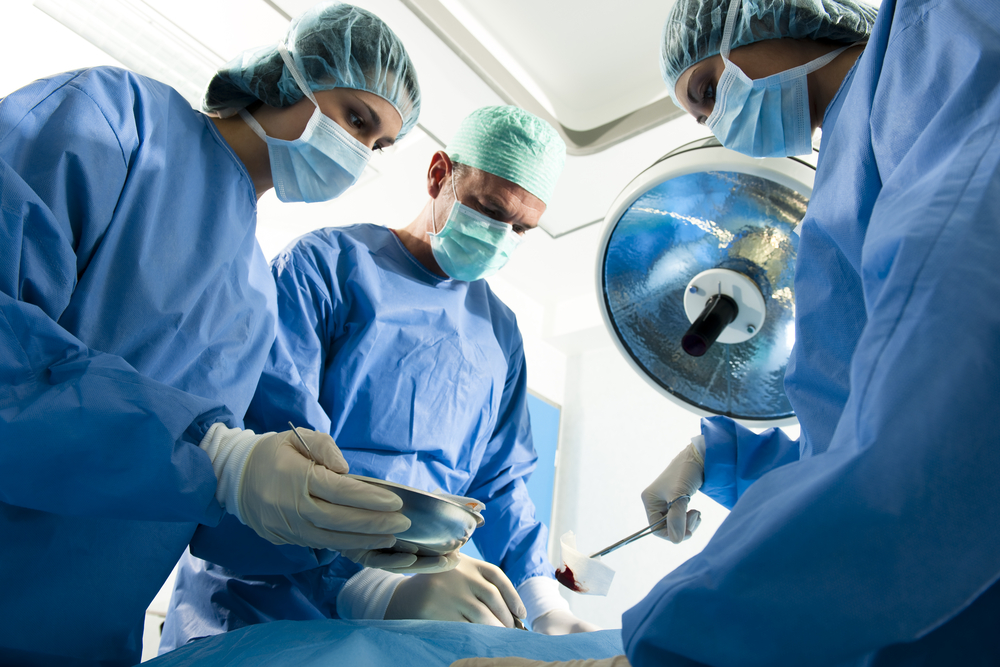Surgical infections: Evolving Solutions.
Doctor, will I get an infection from surgery? If I do, then what?

This is a question your surgeon never wants to hear, much less have to answer. Why? Because no one knows the answer for sure. Here’s why, and what to do if infection happens.
Infections, fortunately, are uncommon in elective orthopaedic surgery. They happen in 0.1 % to 0.4%[i],[ii] of cases, and can usually be treated without long-term consequences.
Sometimes, however, infection leads to a disaster: the loss of the implant or, worse, the loss of a leg. For this reason infection is feared by both doctor and patient. The randomness of infections, the cost, the loss of work time, the risk to life and limb all drive a maniacal effort to prevent them.
As with much of medicine, there are many interrelated causes of infection. On the surgeon’s side, these causes can be linked to errors in sterilization of equipment, breaks in surgical sterile technique, or failure to recognize unique risk factors the patient may have (such as an immune deficiency, or simultaneous infection in another part of the body).
All of these are avoidable. Checklists have popped up in operating rooms to raise the level of awareness about every single detail that might lead to an infection. Common behaviors of the past—such as too many people in the operating room, or frequent opening and closing of the OR doors—have been virtually eliminated.
On the patient’s side, there are the easy things to control and the impossible ones. Careful pre- and post-operative washing of the skin with Chlorhexidine, a compound found in most antibacterial soaps, has been proved the most effective skin preparation. Preoperative antibiotics timed just 30 minutes before surgery are more effective than antibiotics given long before or after surgery.
It’s also true that a huge variability exists in a patient’s susceptibility to a bacteria. It is well know that operating rooms are not perfectly sterile. Dust in the air, particles circulating through air condition systems and even small amounts of skin flakes from the surgical team’s face or eyebrows can carry viable organisms. We have often commented that a surgeon could spit into one patient’s wound and the patient would never develop an infection, whereas a different person will grow a nasty bacteria despite everything being done as carefully as possible. How can that be?
The answer remains a mystery. Some people naturally host unique bacteria on their skin—so much so that a new field of forensic diagnosis of crime scenes focuses on which bacteria a criminal left behind. Some people can live with one organism all over their wounds, yet not tolerate another. With all the high tech solutions we have to prevent infection, and with the best of practices and the healthiest of patients, an out-of-control growth of one specific bacteria can still blossom into infection. The future of preventive therapies may well lie in the testing of each individual for specific bacterial challenges, just as we now do for allergies. Once we know which bacteria a patient will not tolerate, targeted preventive steps may dramatically lower their infection rate.
Fortunately, if identified and treated immediately, most infections (even deep ones around implants) can be eradicated with surgical washing of the wounds and organism-specific antibiotics. But even this is variable. Some patients will respond immediately; others, not for weeks.
Our advice to patients and their surgeons is to take all precautions, use the best techniques, identify the problems immediately, and treat each problem aggressively—like a cancer that could grow out of control. If this is done, only a very few infections will become true disasters.
Infection is a rare possibility for all of us, but this fact should not prevent the right procedures from being performed for the right patients at the right time, all the time.
[i] Datamonitor Report. Epidemiology: Major Orthopedic Surgery – On the rise as the global elderly population continues to grow. (2010)
[ii] APIC. Guide to the Elimination of Orthopedic Surgical Site Infections. (2010)
